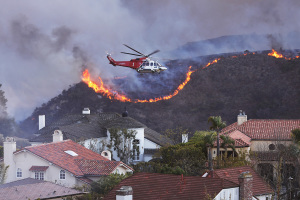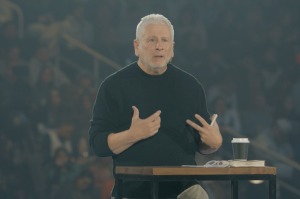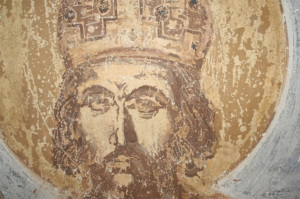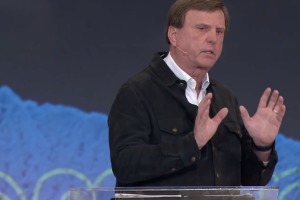Interview with Dr. William Weston: Evangelicalism's Growth and Seminary Trends
The landscape of America's seminaries drastically changed in the last four decades, and the growth of evangelicalism may explain why.
The landscape of America's seminaries drastically changed in the last four decades, and the growth of evangelicalism may explain why.
The following are excerpts from an exclusive interview with Dr. William 'Beau' Weston, a Sociology professor and Presbyterian elder known for researching trends in Christian higher education.
What are some of the major trends that have developed in American seminaries over the past few decades?
Fifty years ago, the seminaries of the mainline Protestant churches were leading. Mainline Protestant churches are the traditional core of the Protestant establishment. The Mainline includes the Episcopalian, Presbyterian and Congregational churches, and more recently has added the Methodists, Lutherans, Northern Baptists, and Disciples churches. Each one has a conservative or evangelical counterpart.
In the 60s, 70s, and onwards, however, the evangelical seminaries started to get more students. Evangelical students were more likely to go into evangelical seminaries, which increased the separation between the two.
Are there explanations for such trends?
In part, the evangelical and conservative side of American Protestantism has just been growing more, while the mainline side has not. In fact, [mainline churches] actually have been shrinking. While their seminaries have been leaders in esoteric theology, they were not in the training of the ministers.
Also, the evangelical seminaries have invested more of their money in getting more students and faculty. As a result, their students and faculty are much larger than they used to be. Looking at it from the supply-side perspective, evangelical seminaries have been supplying more teachers and students into the field, which contributed to the greater growth of the evangelical churches.
How has American evangelicalism come about?
There’s always been a strong strand of American Protestantism that is evangelical. Evangelicals, in a broad sense, means Christians who believe in the traditional doctrines of church - Jesus is Christ, the Bible is the Word of God, and they are commissioned to spread that conviction with others. The crucial aspect about the evangelicals is that they actually do go evangelize.
In the beginning of the 20th century, mainline churches had a more liberal wing and were more interested in the social Gospel. They were liberal in the reading of the scriptures, and even of Jesus’ identity. While they were never of majority, these liberal factions began being accepted as members of those churches. Since then, more conservative people said their churches were becoming too political, apostate, and liberal. There was a series of fights, splits, and trials -- particularly between the most conservative/fundamentalists and the most liberal/moderate.
After these fights, especially in the 1920s and until the 50s, the second generation of those fundamentalists and others who were influenced by the same doctrine were as conservative in theology but were less likely to separate from the world or to give up on all other social relations and more likely to go to college and engage in massive evangelism.
That group, originally in the 40s called “neo-evangelicals” and now more commonly known as the evangelicals, have become in many ways the leading part of not only the conservative American Christianity, but American Christianity in general.
Since the 60s, the evangelical part of Protestantism has clearly been a leading part. Some people say “mainline” is an inappropriate term for the declining church. They talk about the old line versus the new line. The old line is what’s formerly known as the mainline Protestants - Presbyterians, Episcopalians, Congregationalists, Methodists, ELCA, and the Disciples. So every denomination has experienced a general trend of growth in evangelicalism.
What trends have you seen in the seminaries and their denominational affiliations?
About 100 years ago, denomination was clearly an important divider of Christianity. Now, for the past two generations, denomination has been less of an important divider than liberal versus conservative. If you’re a liberal Protestant of just about any denomination, most universities, divinity schools, and mainline seminaries would be similar to one another in your training and pretty satisfactory. Likewise, if you’re a conservative, you’re likely to pick a conservative seminary. It’s always been that there are more conservatives at liberal seminaries than the other way around. If you’re a conservative, you might still go to Harvard Divinity School, but if you’re a liberal, you probably wouldn’t go to Dallas Theological Seminary or even Fuller. I think that’s the great divide and is the core issue in the restructuring of American religion.
The younger generations, Generation X in particular, maybe even more than others, are anti-denominational or tend to be more focused on personal, face to face relations than large institutional structures. I suspect that Generation X in particular is less likely to pick a seminary by denomination than they were by other factors such as what sort of hands on programs there are where they live. That might change in the next generation, but I suspect that to be true for a while.
What denominational affiliations are they likely to have when they leave the seminary?
If they have a strong denomination affiliation when they go in, the denomination is likely to have rules about coming back and serving the denomination. A Presbyterian, for example, is under the care of a presbytery that works and meets with the student all the way along and the whole intention is that he’ll work and minister in the Presbyterian Church.
On the other hand, there are independent churches that by definition do not have a denominational affiliation. So, people who grow up in independent churches and then go to seminary usually do not put much weight on the denominational affiliation of the seminary. (That is an educated guess, rather than a research-based conclusion.) They are likely, though, to be interested in whether the seminary is evangelical/orthodox in its teaching, or not. There are liberal independent churches, but independents as a group are more likely to be conservative.
What major issues have been the dividing point for the liberal and conservatives today?
Homosexuality has been the issue among the Presbyterians and Episcopalians. In fact, all the mainline churches are having this debate. That is the flashpoint story of the moment. Ultimately, if you look back to the fundamentalist/modernist fight in the 1920s, they were fighting over the authority of scripture, debating whether the word of God is inerrant in every word or in general concept.
The apparent prohibitions of homosexual behaviors in the Old and the New Testaments have been a dividing point. Most of the arguments come up because liberals say that even if the Bible prohibits homosexual behavior, it doesn’t matter, saying that it’s a “justice issue” or “God made them that way. The issue is not primarily what we should think, do, or regulate about people engaged in homosexual practice, but what does the Bible really say about this question, and is that really authoritative for the church? That will continue for as long as we can see it. That’s the basic liberal/conservative divide among the Protestants.
What is your outlook on the liberal/conservative divide in the future?
Looking ahead, the liberal/conservative divide is not just among the Protestants, but it’s equally among the Catholics, Jews, Muslims, and just about all religious people. One consequence is that liberals of all traditions have a lot in common with one another and even conservatives of all traditions have a lot in common with one another.
So conservative Protestants, who once upon a time would have reviled the Catholic Church now have a lot in common with Catholic and Jewish traditionalists, and what I expect in the next generation is the inclusion of Muslim traditionalists. Likewise, the liberal counterparts will line up together. This great restructuring of American religion will be the story of the next 100 years.
Dr. William ‘Beau’ Weston is associate professor of sociology at Centre College in Danville, KY and his special interest lies in the sociology of religion, especially in the Presbyterian Church.
Born in Plymouth Meeting, Penn, Weston earned a B.A. with high honors from Swarthmore College and subsequently completed an M.A.R. from Yale Divinity School and M.A. and Ph.D. degrees at Yale University. Prior to coming to Centre in 1990, he served for three years as a research associate in the Office of Research of the U.S. Department of Education.
Weston is the author of several books including Presbyterian Pluralism: Competition in a Protestant House and Leading from the Center: Strengthening the Pillars of the Church, and editor of Called to Teach: The Presbyterian Mission in Higher Education. Former editor of and contributor to Education and the American Family: A Synthesis of Research, he is now completing a history of Centre College.
The 2004 recipient of Kirk Award for Excellence in Teaching, Weston has pursued research and taught courses on a number of topics related to family life and major contemporary social issues. He recently served on the national task force on Changing Families for the Presbyterian Church (USA).
An elder in the Presbyterian Church, Weston and his wife, Susan, are the parents of three children: Molly, Nora and Joe.





























